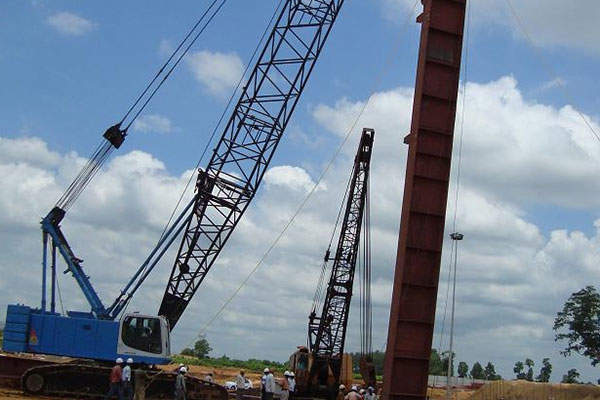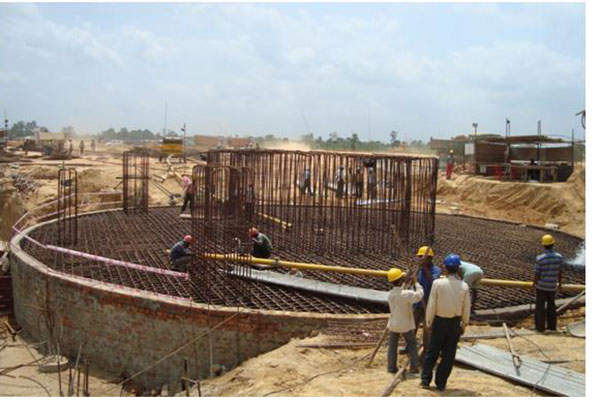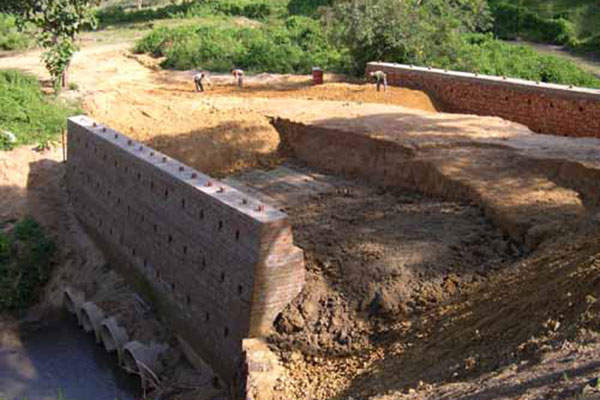The ONGC Tripura power plant is a 726.3MW combined-cycle gas turbine power plant located in the Palatana village of the Udaipur District in Tripura, India. The first 363.3MW unit of the CCGT plant was dedicated to the nation in June 2013 and the second unit was commissioned in November 2014.
The plant was built by ONGC Tripura Power Company (OTPC), a joint venture of Oil and Natural Gas Company (ONGC, 50%), Infrastructure Leasing and Financial Services (IL&FS, 26%) and the Government of Tripura (GoT, 0.5%). IL&FS arranged for the placement of the remaining residual equity of 23.5% in the JV.
The project also included setting up ONGC’s upstream gas supply development project and the installation of a double-circuit transmission line from the project site to Assam. It is the single largest investment in the north-east region of India.
The Indian Government has conferred mega power status to the plant. The estimated investment in the project is approximately $575m.
Plant details and construction of the OTPC power plant in Tripura
The Indian CCGT plant consists of two 363MW Frame-IX combined cycle gas turbines. With conversion efficiency between 57% and 58%, the turbines consume less gas per unit of energy generated.
A memorandum of understanding (MoU) was signed with the Bangladesh Government for the transport of heavy equipment for installation at the plant through the Ashuganj Port on the Meghna River. Under the MoU, OTPC agreed to develop a roll-on, roll-off jetty at Ashuganj port and construct bypasses on water bodies as well as repair and widen the Sultanpur-Akhaura border.
An effluent treatment plant has also been built for handling the effluents generated at the plant. Stack monitors were placed to monitor the out flue gas.
Power generation at OTPC Tripura power plant
Fuel requirements for the project are met through ONGC’s gas fields in Tripura. A gas sale and purchase agreement was made between ONGC and OTPC for the supply of five million standard cubic metres of gas a day to the power plant.
The power generation process involves the firing of natural gas and using the high-gas pressure to drive the gas turbine generator. The exhaust gases from the gas turbine are fed into a heat recovery steam generator, which results in steam generation.
The steam is fed into the steam turbine, which produces electricity when coupled with the turbine generator.
Transmission and sale of power generated at the CCGT power plant
A 650km-long, 400kV DC transmission line was laid from the plant site at Palatana, Tripura to Bongaigaon in Assam, for transmission of the generated power.
The power transmission system was developed and operated by North East Transmission Company Limited (NETCL), a joint venture of OTPC, Power Grid Corporation of India and the north-eastern region (NER) beneficiary states.
A special purpose vehicle (SPV) was initiated to construct a trunk transmission line to transfer the power generated from the plant. The SPV is promoted by OTPC, PGCIL and the NER states.
The power purchase agreement (PPA) made for the plant mandates the sale of 628MW out of 726MW to north-eastern states of India and the remaining 98MW through a short-term PPA.
Contractors involved with Tripura’s CCGT power plant
In August 2008, the $368m engineering, procurement and construction (EPC) contract for the plant’s construction was awarded to Bharat Heavy Electricals Limited (BHEL).
IL&FS Energy Development Corporation (IEDCL) was the project development advisory. The terms of the contract included obtaining approvals and assistance in project development.
PGCIL was the engineering and project management consultant for the $293m transmission system. The scope of the contract included preparing the detailed project report (DPR), finalising the bid packages, bidding process supervision and support for contract execution.
Jyoti Structures was appointed by NETCL for conducting surveys and finalising the route alignment under the supervision of PGCIL.
The technical consultancy contract for the project was awarded to Fichtner consulting engineers. Fichtner was involved in preparing the DPR, EPC selection process and design, project implementation, and construction work.
ABC Consultants were contracted to perform the logistics planning. It prepared a feasibility report and plan for the equipment transportation.
The National Buildings Construction Corporation was assigned with the construction work of the boundary wall at the plant along with chain link fencing and main gate.
The operations and maintenance (O&M) contract for the plant was awarded to General Electric. A long-term spare and service agreement was made to provide O&M for the gas turbine, supply of spares and supervision of power block for 15 years.
Ernst & Young acted as the advisory consultant for dealing with the UN framework convention to climate change (UNFCCC) for the sale of certified emission reductions generated from the plant.
Related content
India plans biggest solar power plant in Madhya Pradesh
The Indian state of Madhya Pradesh will host the country’s biggest solar power plant, in Neemuch in the Malwa region.
GVK Power to acquire thermal power plants in India
GVK Power and Infrastructure has unveiled plans to acquire two thermal power plants currently under construction in India.







